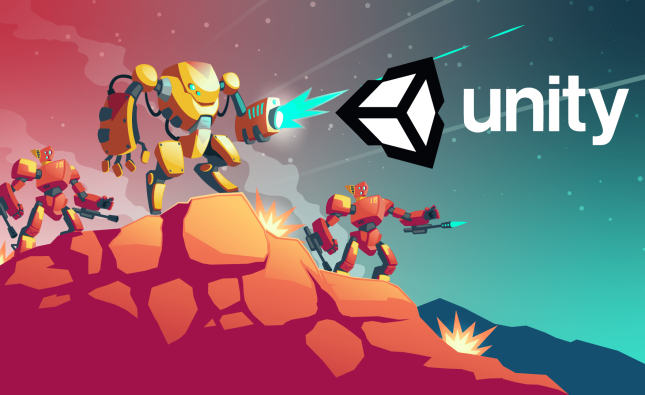
Introduction
The mobile gaming industry has seen tremendous growth over the past decade. With millions of players worldwide, mobile games have become a powerful platform for game developers and publishers to earn substantial revenue. However, creating a popular game is only half the battle—monetizing it effectively is the key to long-term success.
In this article, we will explore the most effective mobile game monetization techniques used by successful developers. From in-app purchases to ad-based revenue and subscriptions, we’ll dive deep into how to maximize revenue from your mobile game while keeping your players engaged and satisfied.
What is Mobile Game Monetization?

Mobile game monetization refers to the strategies and methods used by developers to generate revenue from their mobile games. Unlike traditional video games, which rely on upfront purchases, mobile games often use a variety of methods to monetize. These methods include in-app purchases (IAPs), ads, subscriptions, and more.
The goal of mobile game monetization is to turn the free-to-play model into a profitable venture. By finding the right monetization strategy that aligns with your game and audience, you can create a sustainable revenue stream while still providing value to your players.
Key Mobile Game Monetization Techniques

1. In-App Purchases (IAPs)
One of the most common and successful ways to monetize mobile games is through in-app purchases (IAPs). IAPs allow players to purchase virtual goods, currency, or other content within the game. This technique works particularly well in freemium games, where the game is free to download but offers extra content or advantages for a price.
Types of In-App Purchases:
- Consumables: Items that are used once and then replenished, such as in-game currency, health potions, or energy boosts.
- Non-Consumables: Permanent items that unlock features or content, like characters, skins, or levels.
- Subscriptions: Recurring payments for access to premium content or perks, such as VIP memberships or monthly game passes.
Tip: To make IAPs successful, ensure that the items you offer enhance the player’s experience and provide value. Avoid creating a “pay-to-win” gaming environment, as it may drive away players.
2. Advertising
In-game ads are another popular mobile game monetization strategy. By integrating ads into your game, you can earn revenue based on impressions, clicks, or user interactions. There are several types of ads you can use:
- Interstitial Ads: Full-screen ads that appear at natural pauses in gameplay, such as between levels or after completing a mission.
- Rewarded Video Ads: Ads that offer players a reward (like in-game currency or items) in exchange for watching a video ad. This is a non-intrusive way to earn revenue while also rewarding players for their real time.
- Banner Ads: Small ads that are displayed at the top or bottom of the screen. While they’re less intrusive, they also generate less revenue compared to interstitial or video ads.
Tip: Make sure the ads are well-placed and not disruptive to the gameplay experience. Rewarded ads, in particular, are a great option since they provide value to the player while generating revenue for you.
3. Subscriptions
Subscriptions are becoming an increasingly popular mobile game monetization technique. By offering players the ability to subscribe to premium content or features, you can create a steady stream of recurring revenue. Subscriptions can provide exclusive content, such as special levels, in-game items, or an ad-free experience.
Types of Subscriptions:
- Premium Memberships: Offer exclusive content, faster progression, or special abilities for a monthly or yearly fee.
- Seasonal Passes: Allow players to access exclusive rewards and challenges during a specific period (e.g., a monthly or seasonal pass).
- Ad-Free Experience: Provide players with the option to pay for a subscription that removes ads from the game entirely.
Tip: To make subscriptions attractive, offer ongoing value that keeps players engaged. Ensure that the subscription offers perks that justify the recurring cost.
4. Freemium Model
The freemium model is one of the most widely used monetization techniques in mobile playing games. It’s based on offering the game for free while giving players the option to make purchases to enhance their experience. Players can enjoy the game without spending money, but they have the option to buy items, power-ups, or other features to improve their gameplay.
The freemium model can work well in combination with in-app purchases and ads to create a balanced revenue stream.
Tip: Ensure that your game remains enjoyable for players who choose not to spend money. The key is to offer enough value to free players while providing extra perks for paying players.
5. Virtual Goods and Currency
Many mobile games use virtual goods and in-game currency as a central part of their monetization strategy. Players can purchase currency or items that are only available within the game. This currency can be used to unlock special items, characters, or other content that enhance the gaming market experience.
Tip: Make sure that the virtual goods or currency you offer are desirable and add value to the player’s experience. Offering exclusive items or limited-edition content can create a sense of urgency and encourage purchases.
6. Crowdfunding and Donations
For some mobile game developers, crowdfunding and donations can be a viable monetization technique. Platforms like Kickstarter or Patreon allow developers to raise funds from players who want to support the game or get early access to exclusive content. In return, players may receive in-game rewards, early access to updates, or other perks.
Tip: Crowdfunding works best when you have a strong, dedicated community. Make sure you offer rewards that resonate with your target audience and encourage them to support your game financially.
Tips for Maximizing Mobile Game Monetization

- Focus on Player Experience: The key to long-term monetization is creating a game that players love to play. Ensure that the monetization strategies you implement don’t interfere with the gameplay experience. Focus on providing value, whether through in-app purchases, ads, or subscriptions.
- Test and Optimize: Don’t be afraid to experiment with different monetization techniques. Try different ad placements, offer limited-time promotions for in-app purchases, and tweak your subscription models. Analyze player behavior and optimize your strategy based on what works best.
- Provide Non-Intrusive Ads: Rewarded video ads are a great way to monetize without irritating players. Make sure that your ads are optional, non-intrusive, and provide rewards that players actually value.
- Offer Value for Free Players: Not all players will want to spend money, but that doesn’t mean they won’t be valuable. Focus on offering a great free-to-play experience, and encourage players to make purchases through the value you provide.
- Use Social Proof and FOMO (Fear of Missing Out): Players are more likely to spend money if they see that others are doing the same. Offer exclusive items or limited-time offers that create a sense of urgency.
Future of Mobile Game Monetization

Looking ahead, mobile monetization will become smarter and more personalized by 2025 and beyond. Artificial intelligence may tailor offers based on each player’s spend history and engagement patterns, suggesting the right deal at the right time. Subscription models could evolve into “all-access” passes across multiple titles from the same publisher. Blockchain and NFTs might enable true ownership of digital items that can be traded or sold outside the game. As technology and player expectations change, successful studios will blend fairness, creativity, and flexibility to keep players happy and revenue growing.
Comparative Table: Mobile Game Monetization Methods
| Monetization Method | Description | Pros | Cons |
|---|---|---|---|
| In-App Purchases (IAPs) | Players purchase in-game items, currency, or perks | Provides a steady revenue stream, high flexibility | Can lead to pay-to-win if not balanced properly |
| Advertising | Revenue generated from in-game ads | Easy to implement, works with free-to-play models | Can be intrusive if not placed correctly |
| Subscriptions | Players pay a recurring fee for premium content | Recurring revenue, player engagement | May not attract all players, requires constant value |
| Freemium Model | Game is free, but offers paid upgrades | Attracts a wide audience, allows flexibility | Can frustrate players if monetization is too aggressive |
| Virtual Goods/Currency | Players buy in-game currency or items | Increases player investment in the game | Can create frustration if progression is blocked |
| Crowdfunding/Donations | Players support the game financially | Builds a dedicated fanbase, funds development | May not be reliable, requires strong community support |
Conclusion
Mobile game monetization is a crucial aspect of creating a successful game. By choosing the right techniques, such as in-app purchases, ads, or subscriptions, you can create a sustainable revenue stream while keeping players engaged. Remember to test different strategies, focus on providing value, and always prioritize the player experience.
Call to Action
Ready to maximize your game’s revenue? Start implementing these mobile game monetization techniques today to boost your earnings and create a successful, player-friendly game. Visit our website for more tips on mobile game development and monetization strategies.










